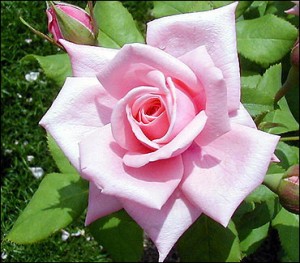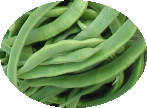Part 1 by Michael D. Barwise
Although almost everyone likes roses, many remain content with the garden centre range of hybrid teas and modern floribundas, unaware of the variety and wonder of the old fashioned roses, and the wide range of uses to which they can be put. The magnificent colours and scents of these roses are, however, gradually becoming more well known, and with this comes increased interest in roses as a crop, rather than just as ornament.

Roses have been used to produce perfumes, confectionery, cordials and wines for thousands of years. Rose petals were strewn at Roman feasts, and there is clear evidence of medicinal uses from medieval times in, for example, the name of Rosa Gallica officinalis: the ancient French Apothecaries’ Rose. Although no longer used in medicines, roses (notably Rosa damascena Kazanlik) are still grown by the acre in such places as Bulgaria for the production of perfume. However, such vast quantities are required for this due to the tiny amount of rose oil in each flower that perfume production is not really practical for the smaller grower. Nevertheless, even on the allotment, a sufficient crop can be obtained for the production of cordials, wines and confections, and even simple cosmetics.
The best roses to choose are of the old fashioned kinds: gallicas, centifolias, albas, musks, and some of the Portland roses. These flower once only per year, in June or July, but so profusely if well tended that this does not limit their utility, or indeed their beauty. They are generally easy to care for, requiring negligible pruning except for the cutting out of dead wood and overcrowded stems, and are in general pretty resistant to the diseases that beset the later continuous flowering hybrids.
Contrary to popular belief, you are not restricted to red roses. The extract, even of white roses, is red, and its colour is not significantly influenced by the colour of the flowers. Your roses must, though, be selected for strong perfume. This is not difficult as the old fashioned roses surpass all others for scent. The most important consideration has to be the ultimate size of the bushes, as some of the finest old fashioned roses will happily grow to more than ten feet high by eight or ten across. Roses I have found suitable for cropping in a small space include Rosa alba Felicite Parmentier (light pink), Bourbon rose Boule de Niege (white, patched red in bud), Rosa damascena Kazanlik (carmine), Rosa damascena Madame Hardy (white flushed pink), Rosa gallica Alain Blanchard (magenta), Rosa gallica Belle Isis (pink), Rosa gallica Duc de Guiche (magenta), Rosa Gallica Tuscany Superb (deep crimson, sometimes almost black), Rosa gallica Versicolor (also known as Rosa Mundi, the ancient magenta and white striped rose), Rosa centifolia muscosa Capitaine John Ingram (violet), Rosa centifolia muscosa William Lobb (magenta), and the Portland roses Jaques Cartier (pink) and Rose de Rescht (pink). All of these are small shrubs no more than about five feet high by four across, and they are among the most sweetly scented of the old fashioned Roses. I must emphasise that my colour descriptions do not do them justice either!
Next time I will describe how rose petals are used. Until then, why not plan your rose garden?



